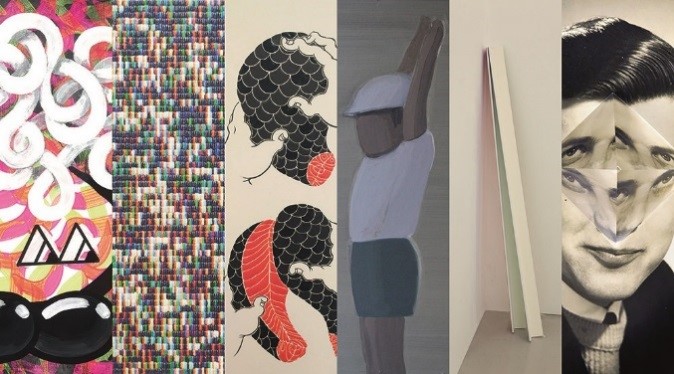 Talk
TalkTuesday 26 May 2015
6:00pm – 8:00pm
Two Truths
13/14 Cornwall Terrace, London NW1 4QP
Organised by the Daiwa Anglo-Japanese Foundation
This talk highlighted the curatorial concerns of Griffin Gallery Director Becca Pelly-Fry about the impact of cultural displacement on artistic practice. She moderated a conversation amongst the 6 Japanese artists from the exhibition Two Truths.
Two Truths explores the Buddhist doctrine of the same name that differentiates between two levels of truth: conventional and ultimate (or, relative and absolute). Conventional truth is how we usually see the world; a place full of diverse and distinctive things and beings. Ultimate truth is empty of concrete and inherent characteristics; there are no distinctive things or beings.
The artists in this exhibition represent elements of the world around them, conventional truths if you will, perhaps in an attempt to understand the abstract and indefinable: the ultimate truth. Arguably this is the journey of all artists, musicians, writers and performers, but how might the relationship to ‘truth’ be affected by cultural displacement?
Japanese by birth and heritage, three of the exhibiting artists decided early in their careers to move to and ultimately settle in London. The other three are at the beginning of their artistic journeys, having graduated recently, and are still living and working in their home country of Japan.
About the contributors

Becca Pelly-Fry
Becca Pelly-Fry has been Griffin Gallery Director since January 2013, and has since curated exhibitions including Water + Colour, Drawing Into Sculpture and PERFECTIoNISM (Part I.). Pelly-Fry originally trained as a sculptor at Northumbria University, after graduating she began her commercial career at The Biscuit Factory Gallery in Newcastle, rapidly becoming gallery manager and curator.

ICHASU, Keisuke Katsuki, Yuka Kurita, Miho Sato, Yukako Shibata, Kazuya Tsuji
ICHASU is interested in the idea of “celebration” as a central concept to her work. She explores the actions and aesthetics of celebration events such as the wedding, graduation, and entrance ceremonies.
Keisuke Katsuki is concerned with the way we view and display imagery in today’s world of illuminated computer screens and advertising billboards. By taking low-resolution images of well-known modern and contemporary works of art and transforming them into an RGB (red, green, blue) pixel format, Katsuki forces us to rethink our relationship to these images.
Yuka Kurita is attracted to arrangements of everyday objects, such as packed salmon slices found in supermarkets in Japan. This idea of things being the same but with very small, almost unnoticeable differences is a main preoccupation in her work. The salmon slice in Kurita’s work takes on its own identity as an object called “sha-ke”.
Miho Sato works from commonplace images derived from magazines, postcards and television. These images are collected but often lay dormant until such a time that they trigger a relationship to a childhood memory.
Yukako Shibata has created delicate sculptures to explore the subliminal colours of both the natural and man-made world and question the complex interplay of light and atmosphere. There is a meditative quality to her work, the undulating shapes and reflected colours occupying a space between wake and sleep, conscious and subconscious.
Kazuya Tsuji is interested in the displacement of everyday materials and how a simple juxtaposition can dramatically alter our relationship to an image or object. Gathering mundane images, he alters them to show the miraculous, the hilarious, the grotesque and the wonderful.
